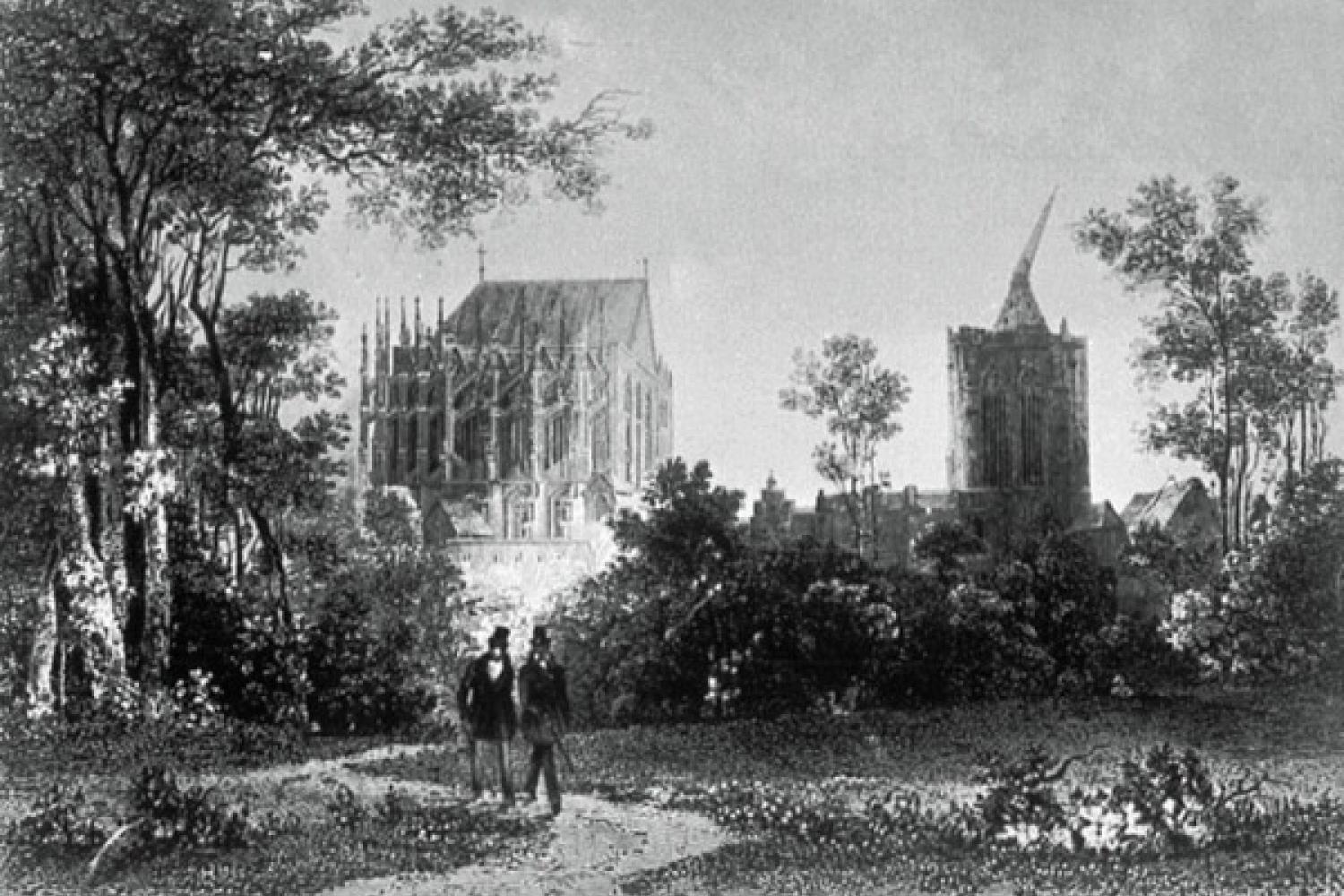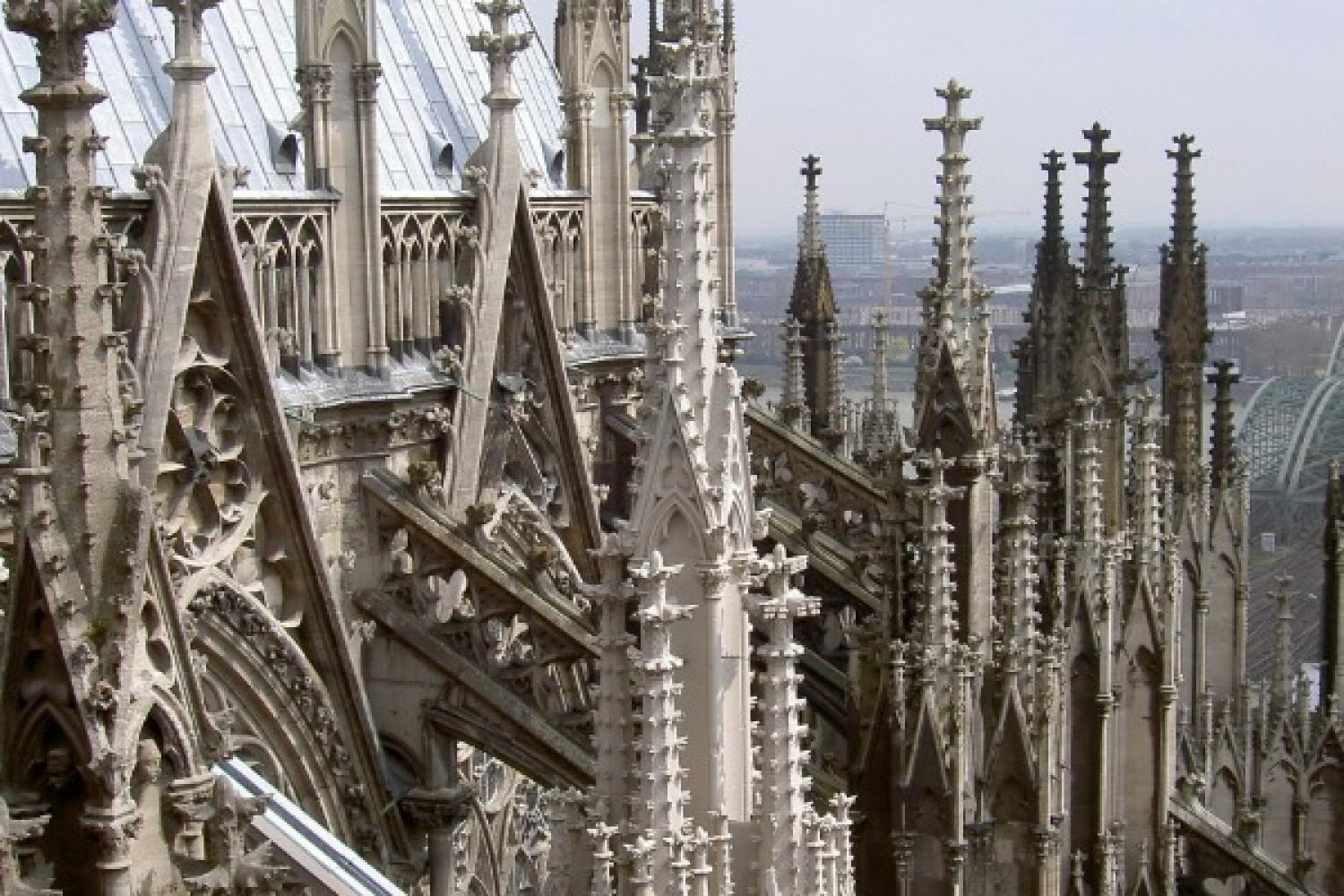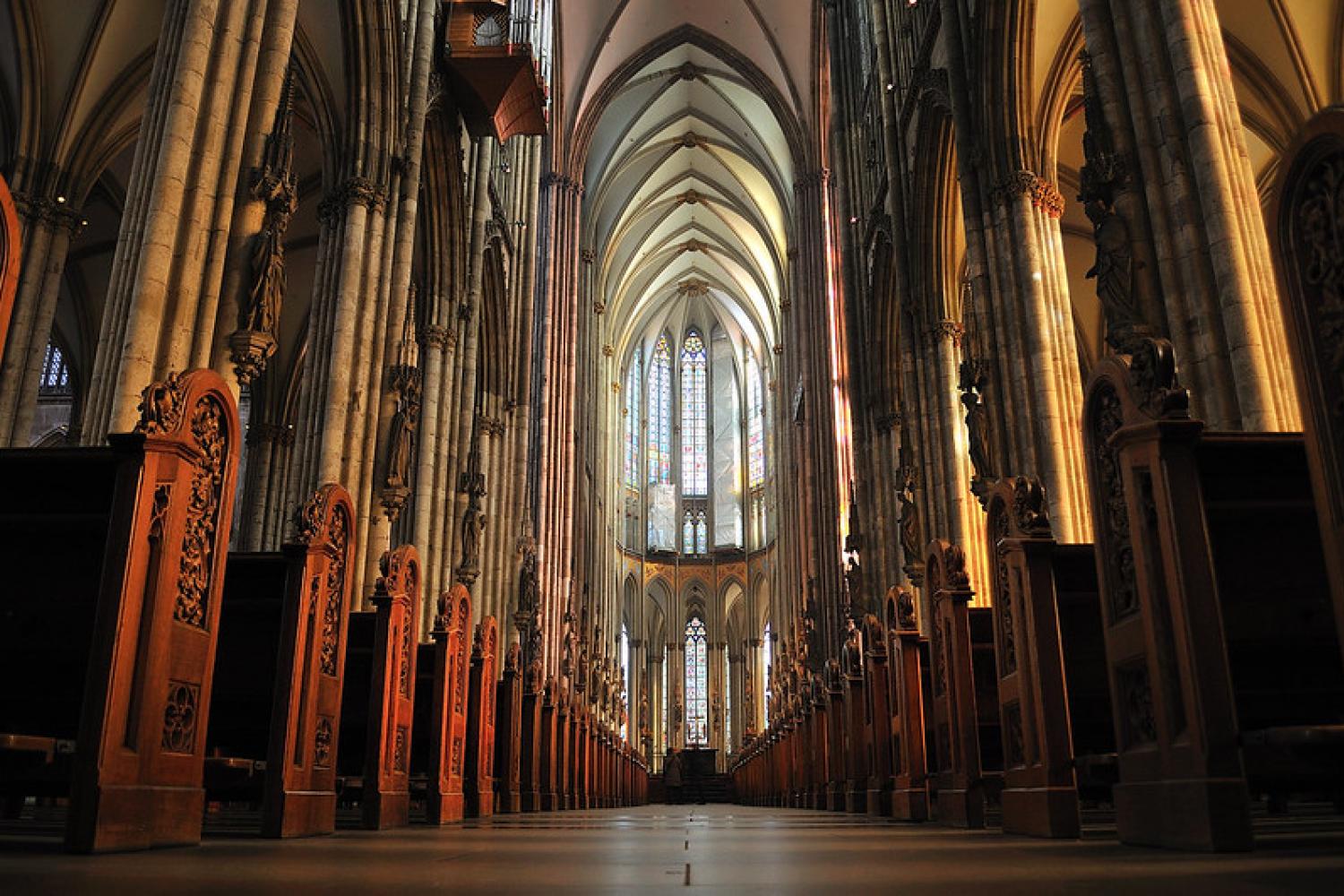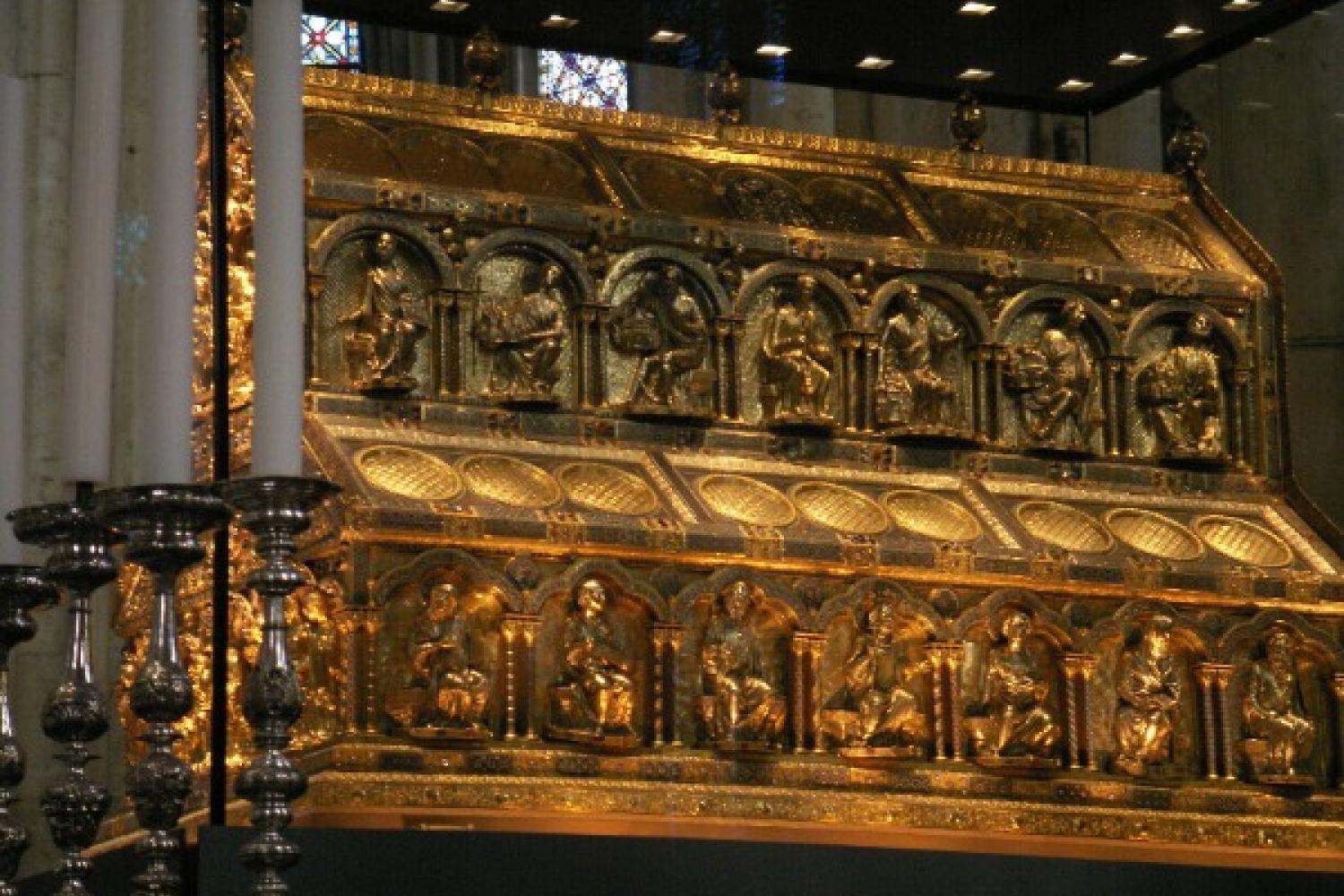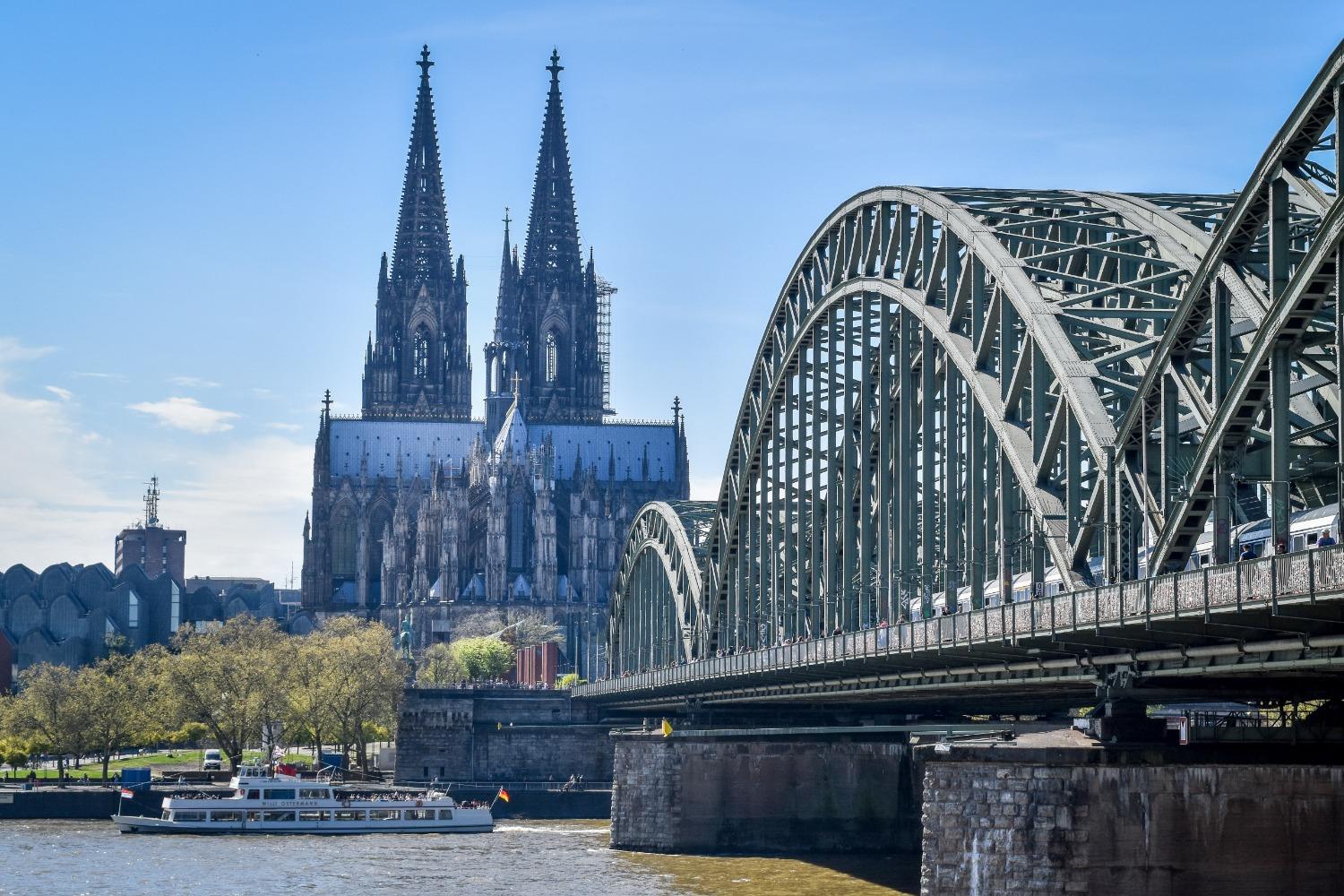
When Holy Roman Emperor Frederick Barbarossa brought the relics of the Three Kings (or the Three Magi) from Milan to Cologne in 1164, the decision was made not only to build a beautiful reliquary (pictured below) but also to build a grand Gothic cathedral to house them. The cornerstone of the Cathedral Church of Saint Peter – commonly known as the Cologne Cathedral – was placed amidst festivities for the Solemnity of the Assumption of Mary on August 15, 1248. On August 14, 1880, church bells rang throughout the city to celebrate the cathedral’s completion, 632 years later (less one day). Under constant repair and renovation, the Cologne Cathedral and the scaffolding that has surrounded its various parts almost continuously since 1248 have formed an unforgettable part of the city’s center for nearly eight centuries.
The eastern arm of the cathedral was completed in 1322, and a wall was constructed to enclose the space, allowing it to be used. Work on the structure was brought to a halt entirely in 1473, and the unfinished church – including the medieval crane that had been installed to construct a bell tower – was left largely untouched for three centuries. The reason for the delay was simple: the project ran out of funding as enthusiasm for the generation-spanning project ran dry.
In 1842, new life was breathed into the project, as a massive civic organization was formed to raise funds to complete the cathedral. Aided by a renewed cultural interest in the city’s medieval history and the support of the Protestant Prussian government looking to build rapport with its Catholic subjects, the civic organization raised the funds necessary to complete the project (and continues to pay for the upkeep and renovation of the building to this day). Despite widespread destruction all around the cathedral in World War II, the building remained standing.
The building plan of the massive Gothic cathedral was taken from that of the Amiens Cathedral in northern France. At the time of its completion, the Cologne Cathedral was the tallest building in the world. Flying buttresses dominate the exterior of the building, being both aesthetically characteristic of Gothic architecture and a structural necessity in order to support the outward pressure of the massive roof. Numerous decorated pinnacles rise from the buttresses, adding to the impressive nature of the building. The interior of the building is equally awe-inspiring: pilgrims can immediately feel the height of the building as light pours into the massive space. It is difficult not to feel as if one is being drawn upwards into greater interior heights.
The relics that inspired the construction of the cathedral remain in their reliquary behind the high altar. The gold-plated reliquary – which is five feet tall and is over seven feet long – has served as a popular object of pilgrimage for centuries.
Through the Cologne Cathedral, one can see the impact that the faith of our ancestors has had on our culture today. The Cologne Cathedral’s central role in the identity of the city is manifest not only by its constant presence on the city’s skyline but also by the three crowns in the center of the city’s official coat of arms. Despite being the home of numerous Holy Roman Emperors, the three crowns refer not to imperial authority but instead to three wise men, remembered today only for their faith and worship.
Photo Attribution A: "Cologne Cathedral Looking East" by User:Mkill is licensed through Wikimedia under CC BY-SA 3.0.
Photo Attribution B: "Cologne Cathedral" by Juan Rubiano is licensed through Flickr under CC BY-NC-ND 2.0.
Photo Attribution C: "Shrine of the Three Kings" by Welleschik is licensed through Wikimedia under CC BY-SA 3.0.

The First Draught
To receive the Weekly Update in your inbox every week, along with our weekly Lectio Brevis providing insights into upcoming Mass readings, subscribe to The First Draught.
